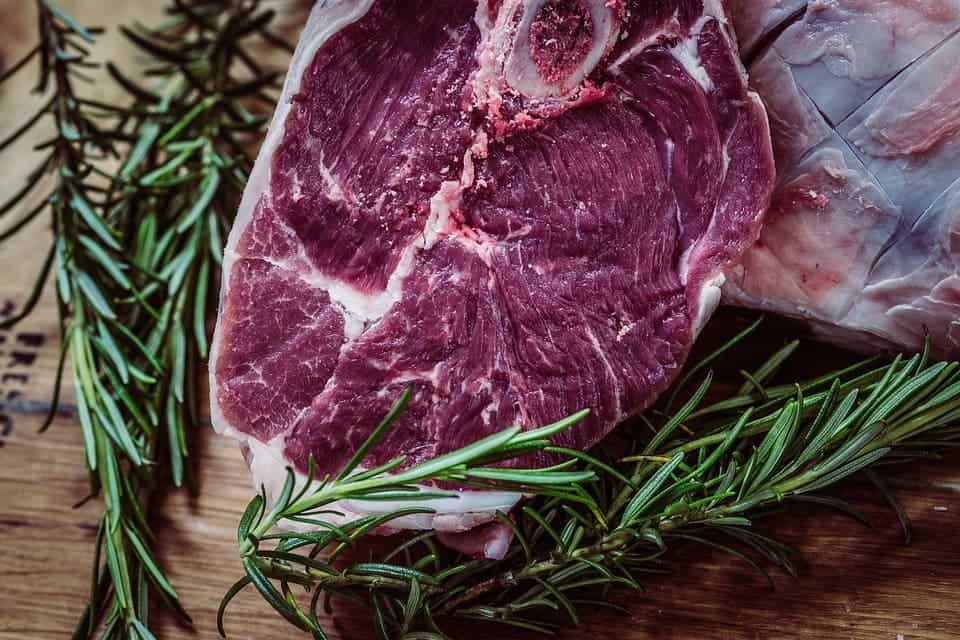Neanderthals may have enjoyed their meat — often.
An international research effort has found that Neanderthals were predominantly meat-eaters. The findings come from isotope analysis performed on Neanderthal remains recovered in France.
Haute cuisine
Our understanding of the Neanderthals has changed profoundly over time. At first, we simply assumed they were brutish, more ape than human. Among other characteristics, the prevailing theory was that their diets were primarily vegetarian — big apes are largely vegetarian, this line of thinking went, so Neanderthals must have been the same, right?
We’ve come a long way since then. Archeological evidence revealed that far from being simple-minded and lacking in general skills and finesse, these ancient humans were quite capable. They enjoyed beauty for beauty’s sake, they developed refined tools, established cultural and spiritual practices, and — as they managed to woo our ancestors into bed/the cave — some were probably quite dashing, as well.
The new study comes to flesh out our understanding of what Neanderthals liked to dine on. The team analyzed proteins from preserved collagen in Neanderthal bones found at two dig sites in France: the remains of a one-year-old baby found at Grotte du Renne, and a tooth from Les Cottés. The results show that Neanderthals were neither vegetarian nor simply content with scavenging meat from the kills of other beasts. In fact, they probably killed said beasts and ate them.
The team reports that the ratios of nitrogen-15 to nitrogen-14 isotopes in the collagen samples are similar to what we’d see today in major meat eaters — wolves or lions, for example. The findings, the team explains, add to the body of evidence pointing to the Neanderthals being predominantly meat eaters.
Nitrogen ratio analysis is a widely-used tool for diet reconstruction in ancient species. Nitrogen is a reliable indicator of an organism’s position in a food chain, as organisms obtain it solely through diet. Higher N-15 to N-14 ratios are indicative of carnivores — who concentrate nitrogen from lower trophic levels through diet. The ratio the team found in the Neanderthal collagen is slightly higher than that found in carnivore remains at Neanderthal sites, which the team takes as evidence the Neanderthal’s high position in their local food webs.
There’s also a growing body of indirect evidence supporting this view, the authors note. Previous discoveries of spears found alongside their remains, as well as evidence of butchered animal bodies, suggests that they were quite adept at hunting and processing game. Neanderthals also likely had a bulkier, thicker thorax than modern humans (that’s us). This constitution allowed for larger kidneys and livers compared to our own, a feature common among animals whose diets are heavy in animal protein.
They note that another possibility is that the high ratios were owed to a diet heavy in mammoth meat, putrefying meat (I hope it was the mammoth), or fish. The team used a novel technique called compound-specific isotope analyses (CSIA) to separately analyze each amino acid found in the collagen. The exact isotope composition of amino acids is heavily influenced by diet.
“Using this technique, we discovered that the Neandertal of Les Cottés had a purely terrestrial carnivore diet: she was not a late weaned child or a regular fish eater [fish was not readily accessible at either site], and her people seem to have mostly hunted reindeers and horses”, says Klervia Jaouen, a researcher at the Max Planck Institute for Evolutionary Anthropology and first author of the study.
“We also confirmed that the Grotte du Renne Neandertal was a breastfeeding baby whose mother was a meat eater”.
Another finding was that Neanderthal diets were likely very stable over time, primarily meat, even after they had started to refine tool-processing techniques (possibly as a consequence of interacting with modern humans).
Taken as a whole, the study explains, these tidbits support the view that meat, particularly that obtained from herbivorous animals, was the main constituent of the Neanderthal diet. Small game was likely predominant on the menu, given that bones of fawns and other similarly-sized animals have been found at numerous Neanderthal dig sites and that smaller game is more readily killed with spears — but, as this study reveals, local food resources likely altered what Neanderthals ate in various areas.
The paper “Exceptionally high δ15N values in collagen single amino acids confirm Neandertals as high-trophic level carnivores” has been published in the journal PNAS.










